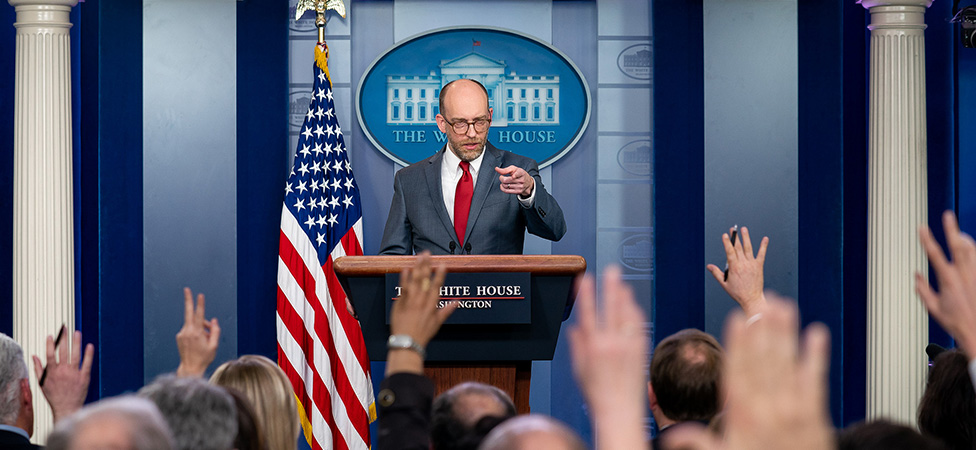March 26, 2019
Trump Preps for a Real Budget Test


On March 14th, the Senate followed the House voting 59-41 to pass a motion blocking President Trump’s border wall emergency designation. Opponents of Trump’s emergency maneuver argued that it undercuts the Congressional power of the purse. The vote will generate President Trump’s first veto, and his veto will be sustained. The likely result of Trump’s manufactured shutdown crisis is a stalemate with reallocated emergency border construction funds tied up in courts through the 2020 elections.
President Trump faces a tougher test this fall. If those budget negotiations end in stalemate, the Department of Defense faces a $71 billion sequester, non-defense agencies face a $54 billion sequester, and a default on US debt risks a debt downgrade, higher interest rates, and a market correction that slows economic growth. While that’s not an acceptable outcome for President Trump, Speaker Pelosi (D-CA) or Senate Majority Leader McConnell (R-KY), avoiding it means forging an agreement on an alternative that can pass a Democrat-controlled House and a Republican-controlled Senate.
In President Trump’s FY18 and FY19 Budgets, OMB Director Mulvaney funded the President’s spending priorities within the discretionary spending caps set by the 2011 Budget Control Act (BCA). To make the budget math work, each of those budgets cut non-defense agency spending below the BCA caps to offset Trump’s proposed defense spending increases. For both budgets, the spending assumption for FY20 non-defense spending was $456 billion. Facing unified opposition from Congressional Democrats, a GOP-controlled Congress rejected those proposals in a series of House and Senate votes by large bipartisan margins before adopting the two-year, cap-boosting Bipartisan Budget Act of 2018 (BBA18) in February 2018.
The FY20 Budget also complies with the FY20 BCA caps for defense and non-defense programs. This time, Trump’s FY20 Budget request for non-defense programs is $543 billion. The $87 billion cut below the FY20 BCA cap has vanished. That shift eliminates an element of political gamesmanship and effectively raises the FY20 planning floor for civilian agencies (see Chart I). Why change cap strategy? If a GOP-controlled Congress refused to cut non-defense spending, what chance would those proposals have in the House of Representatives?
To achieve Trump’s $750 billion FY20 national defense funding target, the self-described “King of Debt” uses debt-financing, $107.6 billion in increased in cap-exempt Overseas Contingency Operation (OCO) and emergency funding (see Chart II).
Before budget negotiations begin in earnest, House Democrats will release their own budget and schedule votes on FY20 appropriations bills with dramatically different tax, policy, and funding priorities than those outlined in Trump’s Budget.
Barring a major external event, we believe Trump’s new approach increases funding uncertainty for the Pentagon as it prepares for a $71 billion FY20 sequester. Combine Trump’s OCO scheme with the challenge Speaker Pelosi (D-CA) and House Budget Committee Chairman Yarmuth (D-KY) face in garnering the 218 votes needed to pass a House budget (with no help from Republicans) for the first time since 2010, and the timetable for budget negotiations slips from summer to fall, increases agency October funding uncertainty, and becomes driven by three action-forcing events.
Forecast
75% Federal agencies begin October operating under the most restrictive Continuing Resolution in over a decade.
Without agreement on a Continuing Resolution (CR), agencies face a potential government shutdown on October 1st. After the record-setting 35-day partial government shutdown, Congress has little appetite for an October shutdown. In our forecast, October shutdown prospects have dropped to less than 10%.
Second, absent a FY20 cap-adjustment deal, federal agency planners face a $125 billion FY20 sequester in October.
Finally, current projections from the Congressional Budget Office and the Treasury Department indicate that a federal debt limit increase must be enacted by fall 2019. Politically, both Democrats and Republicans have an incentive to extend the debt limit beyond the 2020 Presidential elections (likely to March 2021).
With divided government, negotiating a bipartisan compromise of that magnitude requires trust between Democrats and Republicans and between Congress and the Administration. Senate Majority Leader McConnell (R-KY) and Speaker Pelosi (D-CA) are experienced pros who have repeatedly demonstrated their ability to solve problems, count votes, and push things through Congress. The “wild card” in this scenario is President Trump.
In December, Trump put politics first. He undercut a bipartisan spending deal negotiated between McConnell, Pelosi and Senate Democratic Leader Schumer (D-NY) after it passed, forced a shutdown, manufactured an issue for the 2020 elections and fired up his political base. The terms of the final FY19 spending deal strongly suggest that maneuver will reduce the President’s leverage in budget negotiations this fall with much higher stakes. The end result is likely to cost the Department of Defense billions.
